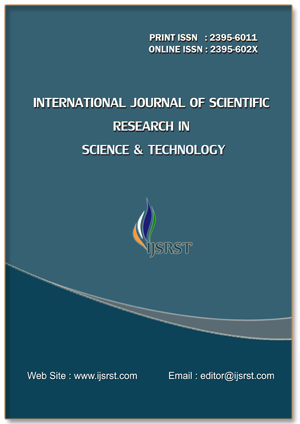The Impact of Mis-Centering On CT Number Uniformity and Linearity in CT Simulator
DOI:
https://doi.org/10.32628/IJSRST251222613Keywords:
mis-centering, CT simulator, CT number uniformity, CT number liniarityAbstract
This aim of this study is investigating the effect of mis-centering on computed tomography (CT) number uniformity and linearity in CT simulator. The current study used two phantoms: the GE water phantom for CT number uniformity evaluation, and the ACR Gammex 467 phantom for CT number linearity evaluation. The evaluations of CT number uniformity and linearity were conducted at y-axis with variations of -15, -10, -5, 0, 5, 10, and 15 mm, and with tube voltage variations of 80, 100, 120, and 140 kVp. The results demonstrated that mis-centering affects CT number uniformity. If the y-axis position increases, then CT number uniformity increases. However, mis-centering does not affect CT number linearity.
📊 Article Downloads
References
Chapman A, Buston M, Quach K, Rozenfield A, and Metcalfe P. Verification of CT number to density conversion for a simulator-CT attachment. Australasian Physical & Engineering Sciences in Medicine. 2002;25(2):78-80. doi: 10.1007/BF03178469
Nobah A, Moftah B, Tomic N, and Devic S. Influence of electron density spatial distribution and X-ray beam quality during CT simulation on dose calculation accuracy. Journal of Applied Clinical Medical Physics. 2011;12(3):3432. doi: 10.1120/jacmp.v12i3.3432
Winslow J, Zhang Y, Koweek L, and Samei E. Dependency of prescribed CT dose on table height, patient size, and localizer acquisition for one clinical MDCT. Physica Medica. 2018;55:56-60. doi: 10.1016/j.ejmp.2018.10.015
Anam C, Amilia R, Naufal A, Budi W.S, Maya A.T, and Dougherty G. The automated measurement of CT number linearity using an ACR accreditation phantom.
Biomedical Physics Engineering Express. 2022;9:017002. doi : https://doi.org/10.1088/2057-1976/aca9d5
Kuriyama K, Matsubara K, Hisahara S, Nagata Y, Nosaka R, Goto R, Yanano N, Shimizu K, and Shoji T. Effect of table height displacement and patient center deviation on size‑specific dose estimates calculated from computed tomography localizer radiographs. Physical and Engineering Sciences in Medicine. 2020;43(2):665-672. doi: 10.1007/s13246-020-00874-3
DeWeesw L, Griglock T, Moody A, Mehlberg A, and Winters C. The improvement of patient centering in computed tomography through a technologist-focused education initiative. Journal of Digital Imaging. 2022;35(2):327-334. doi: 10.1007/s10278-021-00580-w
Anam C, Amilia R, Naufal A, and Ali M.H. Automatic measurement of CT number in the ACR CT phantom and its implementation to investigate the impact of tube voltage on the measured CT number. Radiation Physics and Chemistry. 2023;216:111434. doi: 10.1016/j.radphyschem.2023.111434
Cropp RJ, Seslija P, Tso D, and Thakur Y. Scanner and kVp dependence of measured CT numbers in the ACR CT phantom. Journal of Applied Clinical Medical Physics. 2013;14(6):338-349. doi: 10.1120/jacmp.v5i4.1978
McCann C and Alasti H. Comparative evaluation of image quality from three CT simulation scanners. Journal of Applied Clinical Medical Physics. 2004;5(4):55-70. doi: 10.1120/jacmp.v5i4.1978
Ravenscroft L and Baker L. The influence of miscentering on radiation dose during computed tomography head examinations and the role of localiser orientation: A phantom study. Radiography. 2024;30(6):1517-1523. doi: 10.1016/j.radi.2024.09.051
Anam C, Amilia R, Naufal A, Adi K, Sutanti H, Budi W.S, Arifin Z, and Dougherty G. Automated patient centering of computed tomography images and its implementation to evaluate clinical practices in three hospitals in Indonesia. Polish Journal of Medical Physics and Engineering. 2022;28(4):207-214. doi: 10.2478/pjmpe-2022-0024
Hadi Y.H, Keany L, England A, Moore N, and McEntee M. Automatic patient centering in computed tomography: a systematic review and meta-analysis. European Radiology. 2024. doi: 10.1007/s00330-024-11170-z
Euler A, Saltbaeva N, and Alkadhi H. How patient off-centering impacts organ dose and image noise in pediatric head and thoracoabdominal CT. Europian Radiology. 2019;29(12):6790-6793. doi: 10.1007/s00330-019-06330-5
Flatten V, Friedrich A, Cabilic RE, and Zink K. A phantom based evaluation of the dose prediction and effects in treatment plans, when calculating on a direct density CT reconstruction. Journal of Applied Clinical Medical Physics. 2020;21(3):52-61. doi: 10.1002/acm2.12824
Filev PD, Mittal PK, Tang X, Duong PA, Wang X, Small WC, Applegate K, and Moreno CC. Increased computed tomography dose due to miscentering with use of automated tube voltage selection: Phantom and patient study. Current Problems in Diagnostic Radiology. 2016;45(4): 265-270. doi: 10.1067/j.cpradiol.2015.11.003
Habibzadeh MA, Ay MR, Asl ARK, Ghadiri H, and Zaidi H. Impact of miscentering on patient dose and image noise in x-ray CT imaging: Phantom and clinical studies. Physica Medica. 2012;28(3):191-199. doi: 10.1016/j.ejmp.2011.06.002
Makela T, Kortesneimi M, and Kaasalainen T. The impact of vertical off-centering on image noise and breast dose in chest CT with organ-based tube current modulation: A phantom study. Physica Medica. 2022;100:153-163. doi: 10.1016/j.ejmp.2022.06.014
Kaasalainen T, palmu K, Lampinen A, and Kortesniemi M. Effect of vertical positioning on organ dose, image noise and contrast in pediatric chest CT—phantom study. Pediatric Radiology. 2013;43(6):673-684. doi: 10.1007/s00247-012-2611-z
Saltybaeva N and Alkadhi H. Vertical off-centering affects organ dose in chest CT: Evidence from Monte Carlo simulations in anthropomorphic phantoms. Medical Physics. 2017;44(11):5697-5704. doi: 10.1002/mp.12519
Eberhard M, Blüthgen C, Barth BK, Frauenfelder T, Saltybaeva N, and Martini K. Vertical off-centering in reduced dose chest-CT: Impact on effective dose and image noise values. Academic Radiology. 2020;27(4): 508-517. doi: 10.1016/j.acra.2019.07.004
Barreto I, Lamoureux R, Olguin C, Quails N, Correa N, Rill L, and Arreola M. Impact of patient centering in CT on organ dose and the effect of using a positioning compensation system: Evidence from OSLD measurements in postmortem subjects. Journal of Applied Clinical Medical Physics. 2019;20(6):141-151. doi: 10.1002/acm2.12594
Cheng P.M. Patient vertical centering and correlation with radiation output in adult abdominopelvic CT. Journal of Digital Imaging. 2016;29(4):428-37. doi: 10.1007/s10278-016-9861-5
Zheng X, Gutsche L, Al-Hayek Y, Stanton J, Elshami W, and Jensen K. Impacts of phantom off-center positioning on CT numbers and dose index CTDIv: An evaluation of two CT scanners from GE. Journal of Imaging. 2021;7(11):235. doi: 10.3390/jimaging7110235
Rahmat SMSS, Karim MKA, Isa INC, Rahman MAA, Noor NM, and Hoong NK. Effect of miscentering and low-dose protocols on contrast resolution in computed tomography head examination. Computers in Biology and Medicine. 2020;123:103840. doi: 10.1016/j.compbiomed.2020.103840
Downloads
Published
Issue
Section
License
Copyright (c) 2025 International Journal of Scientific Research in Science and Technology

This work is licensed under a Creative Commons Attribution 4.0 International License.
https://creativecommons.org/licenses/by/4.0




